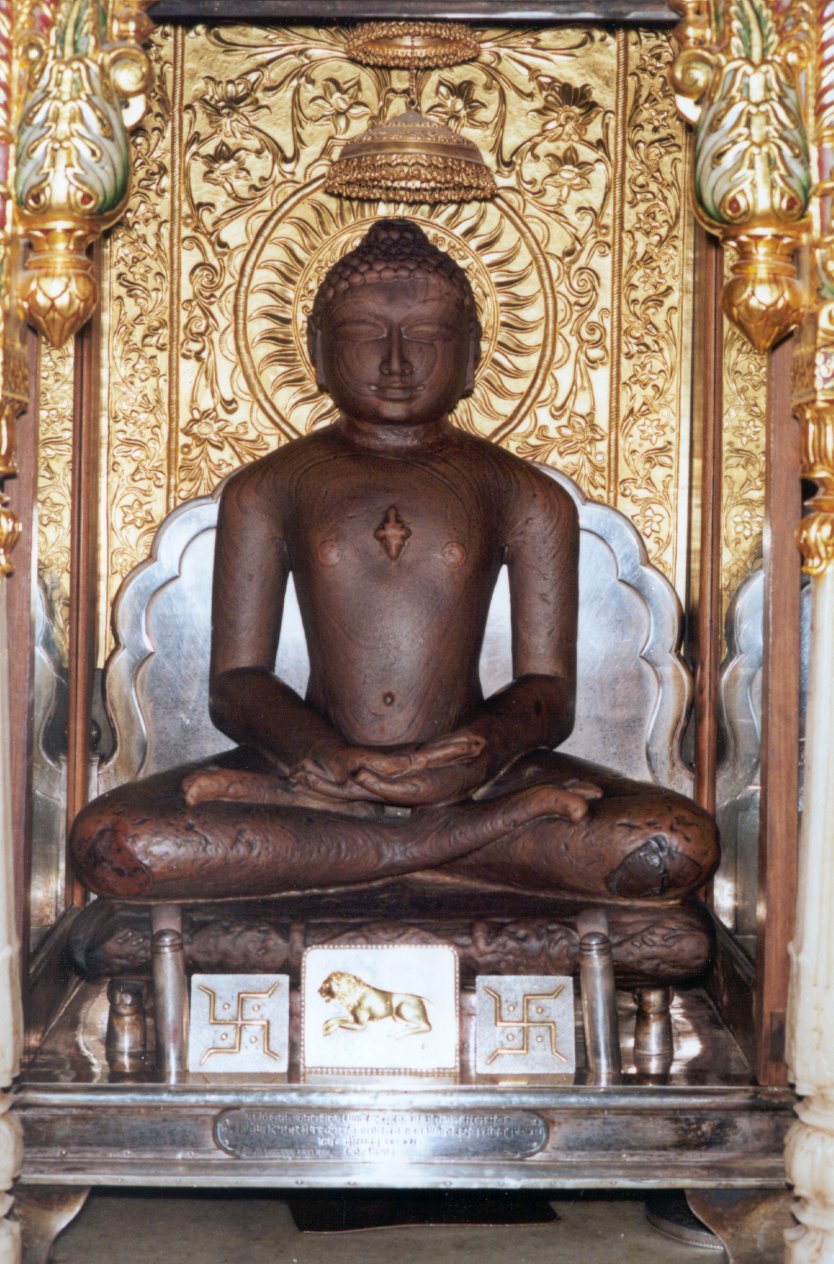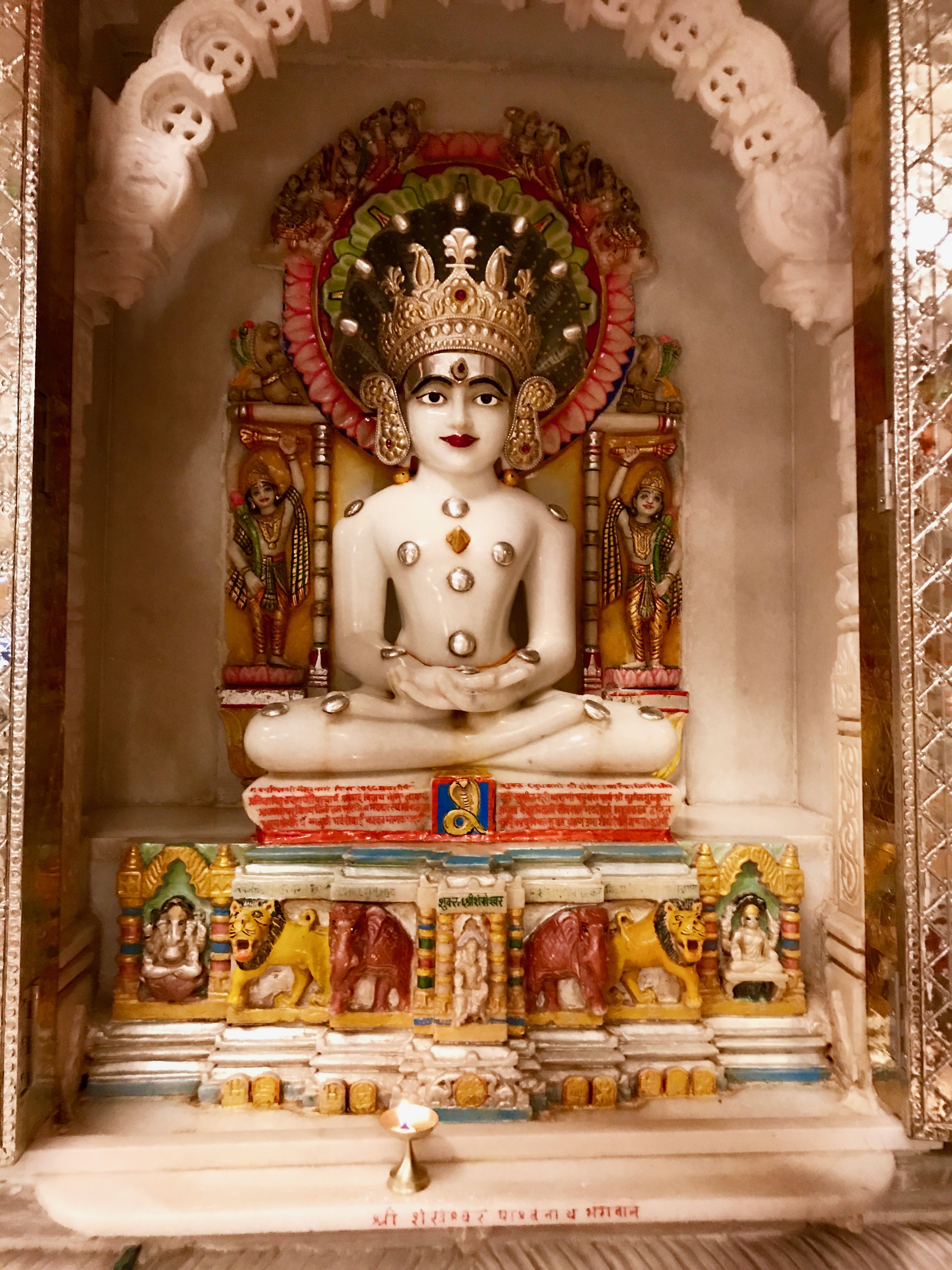|
Bhadrabahu II
Bhadrabahu was a Digambara monk from ancient India. He is called Bhadrabahu II or Bhadrabahu the Junior to distinguish him from the earlier Bhadrabahu. Biography According to the Digambara tradition, Bhadrabahu died in 12 BCE. Association with Varahamihira Unlike the Digambara tradition which suggests the existence of multiple distinct men named Bhadrabahu, the Śvetāmbara tradition mentions only one Bhadrabahu. Two 14th century texts by Śvetāmbara authors - Merutunga's '' Prabandha Chintamani'' and Rajashekhara-suri's ''Prabandha Kosha'' (''Chaturvimsati prabandha'') - describe the 6th-century astrologer Varahamihira as a brother and rival of Bhadrabahu. Merutunga places the two brothers in Pataliputra Pataliputra (IAST: ), adjacent to modern-day Patna, Bihar, was a city in ancient India, originally built by Magadha ruler Ajatashatru in 490 BCE, as a small fort () near the Ganges river.. Udayin laid the foundation of the city of Pataliput ..., while Rajashekha ... [...More Info...] [...Related Items...] OR: [Wikipedia] [Google] [Baidu] |
Jainism
Jainism ( ), also known as Jain Dharma, is an Indian religions, Indian religion whose three main pillars are nonviolence (), asceticism (), and a rejection of all simplistic and one-sided views of truth and reality (). Jainism traces its spiritual ideas and history through the succession of twenty-four , supreme preachers of ''dharma''. The first in the current time cycle is Rishabhadeva, who tradition holds lived millions of years ago; the 23rd is Parshvanatha, traditionally dated to the 9th century Common Era, BCE; and the 24th is Mahāvīra, Mahavira, who lived . Jainism is considered an eternal ''dharma'' with the guiding every time cycle of the Jain cosmology, cosmology. Central to understanding Jain philosophy is the concept of ''bhedavijñāna'', or the clear distinction in the nature of the soul and non-soul entities. This principle underscores the innate purity and potential for liberation within every Jīva (Jainism), soul, distinct from the physical and menta ... [...More Info...] [...Related Items...] OR: [Wikipedia] [Google] [Baidu] |
Digambara
''Digambara'' (; "sky-clad") is one of the two major Jain schools and branches, schools of Jainism, the other being ''Śvetāmbara'' (white-clad). The Sanskrit word ''Digambara'' means "sky-clad", referring to their traditional monastic practice of neither possessing nor wearing any clothes. Nakedness was the ideal practice of lord Mahavira and his immediate followers. Mahavira emphasized the importance of nakedness for monks. It symbolizes complete detachment and is an ideal form of conduct. Mahavira believed that renouncing clothes made the body immune to external influences like heat and cold, increasing resilience. Without clothes, a monk would avoid the distractions of acquiring, maintaining, and washing garments, allowing him to focus on spiritual growth and self-discipline. Digambara and Śvetāmbara traditions have had historical differences ranging from their dress code, their temples and iconography, attitude towards female monastics, their legends, and the texts the ... [...More Info...] [...Related Items...] OR: [Wikipedia] [Google] [Baidu] |
Digambara Monk
A Digambara monk or Digambara Sādhu (also ''muni'', ''sādhu'') is a Sādhu in the Digambar tradition of Jainism, and as such an occupant of the highest limb of the four-fold ''sangha''. Digambar Sādhus have 28 primary attributes which includes observance of the five supreme vows of ''ahimsa'' (non-injury), truth, non-thieving, celibacy and non-possession. A Digambar Sādhu is allowed to keep only a feather whisk, a water gourd and scripture with him. In Jainism, those '' śrāvakas'' (householders) who wish to attain ''moksha'' (liberation) renounce all possessions and become an ascetic. According to the Jain text, '' Dravyasamgraha'': Digambar Sādhus are also called ''nirgranth'' which means "one without any bonds". The term originally applied to those of them who were on the point of attaining omniscience, on the attainment of which they were called ''munis''. Rishabhanath (the first '' Tirthankar'') is said to be the first ''Digambar'' Sādhu of the present hal ... [...More Info...] [...Related Items...] OR: [Wikipedia] [Google] [Baidu] |
Motilal Banarsidass
Motilal Banarsidass Publishing House (MLBD) is an Indian academic publishing house, founded in Delhi, India in 1903. It publishes and distributes serials, monographs, and scholarly publications on Asian religions, Buddhology, Indology, Eastern philosophy, history, culture, arts, architecture, archaeology, language, literature, linguistics, musicology, mysticism, yoga, tantra, occult, medicine, astronomy, and astrology. Amongst its publications are the 100 volumes of the Mahapuranas; the 50 volumes of the '' Sacred Books of the East'', edited by Max Müller; ''Bibliotheca Buddhica'' (30 volumes in 32 pts); Ramcharitmanas with Hindi and English translations; the Manusmriti in 10 volumes and the Sanskrit lexicon; and the 7 volumes of ''Encyclopedia of Indian Philosophies''. It also brings out books based on research and study conducted at organizations such as the Indian Council of Historical Research (ICHR), Indira Gandhi National Centre for the Arts (IGNCA), and Indian Cou ... [...More Info...] [...Related Items...] OR: [Wikipedia] [Google] [Baidu] |
Śvetāmbara
The Śvetāmbara (; also spelled Shwetambara, Shvetambara, Svetambara or Swetambara) is one of the two main branches of Jainism, the other being the Digambara. ''Śvetāmbara'' in Sanskrit means "white-clad", and refers to its ascetics' practice of wearing white clothes, which sets it apart from the ''Digambara'' or "sky-clad" Jains whose ascetic practitioners go nude. Śvetāmbaras do not believe that ascetics must practice nudity. The Śvetāmbara and Digambara traditions have had historical differences ranging from their dress code, their temples and iconography, attitude towards Jain nuns, their legends and the texts they consider as important. Śvetāmbara Jain communities are currently found mainly in Gujarat, Rajasthan and coastal regions of Maharashtra. According to Jeffery D. Long, a scholar of Hindu and Jain studies, about four-fifths of all Jains in India are Śvetāmbaras. History and lineage Śvetāmbaras consider themselves to be the original followers of Maha ... [...More Info...] [...Related Items...] OR: [Wikipedia] [Google] [Baidu] |
Merutunga
Merutuṅga was a medieval scholar from present-day Gujarat in India and was a Śvētāmbara Jain monk of the Achal Gaccha. He is presently most well-known for his Sanskrit text, the '' Prabandhacintāmaṇi'', composed in 1306 CE. He also wrote ''Vicāraśreṇī'' in 1350 CE which describes the chronology of Chāvḍā, Chaulukya and Vāghelā dynasties. Works ''Prabandhacintāmaṇi'' The ''Prabandhacintāmaṇi'' was composed in Vardhamāna (modern-day Wadhwan) in VS 1361 Phālguna Śukla 15, a Sunday. In the text itself, Merutuṅga states that Gaṇī Guṇacandra compiled the first version of the text and that Dharmadeva assisted Merutuṅga in the compilation of the final version. ''Therāvalī'' The ''Therāvalī'' of Merutuṅga is a Paṭṭāvalī that presents a chronology from Mahavira to the arrival of and invasion by the Sakas in India India, officially the Republic of India, is a country in South Asia. It is the List of countri ... [...More Info...] [...Related Items...] OR: [Wikipedia] [Google] [Baidu] |
Prabandha Chintamani
''Prabandha-Chintamani'' (IAST: Prabandha-cintāmaṇi) is an Indian Sanskrit-language collection of ''prabandhas'' (semi-historical biographical narratives). It was compiled in c. 1304 CE, in the Vaghela kingdom of present-day Gujarat, by Jain scholar Merutunga. Contents The book is divided into five ''prakasha''s (parts): # Prakasha I #* Vikramarka #* Shatavahana #* Munja #* Mularaja # Prakasha II #* Bhoja and Bhima # Prakasha III #* Jayasimha Siddharaja # Prakasha IV #* Kumarapala #* Viradhavala #* Vastupala and Tejapala # Prakasha V #* Lakshmanasena #* Jayachandra #* Varahamihira #* Bhartrihari #* Vaidya Vagabhatta Historical reliability As a work of history, ''Prabandha-Chintamani'' is inferior to contemporary historical literature, such as the Muslim chronicles. Merutunga states that he wrote the book to "replace the oft-heared ancient stories which no longer delighted the wise". His book includes a large number of interesting anecdotes, but many of these an ... [...More Info...] [...Related Items...] OR: [Wikipedia] [Google] [Baidu] |
Prabandha Kosha
''Prabandha-Kosha'' (IAST: Prabandhakośa) is an Indian Sanskrit-language collection of ''prabandha''s (legendary biographical narratives). It was compiled by the Jain scholar Rajashekhara Suri in 1349 CE. It describes the lives of 24 people, including 10 Jain scholars, 4 Sanskrit poets, 7 kings and 3 Jain householders. It is also known as ''Chaturvinshati Prabandha''. The content of the collection is based on the information that Rajashekhara obtained from his teacher Tilakasuri. He composed the work at Delhi, under the patronage of Madanasimha, whose father had been honoured by Shri Mahamad Shahi (probably Muhammad Tughluq). Only the 7th ''prabandha'' in the collection (the one about Mallavadi-Suri) is written completely in verse form; the rest of the ''prabandha''s use colloquial Sanskrit prose. Content The ''Prabandha-Kosha'' contains 24 ''prabandha''s (anecdotes), with 4,300 shlokas (verses), on the following persons: Suris (Jain scholars) # Bhadrabahu and Varahamihira ... [...More Info...] [...Related Items...] OR: [Wikipedia] [Google] [Baidu] |
Pataliputra
Pataliputra (IAST: ), adjacent to modern-day Patna, Bihar, was a city in ancient India, originally built by Magadha ruler Ajatashatru in 490 BCE, as a small fort () near the Ganges river.. Udayin laid the foundation of the city of Pataliputra at the confluence of two rivers, the Son and the Ganges. He shifted his capital from Rajgriha to Pataliputra due to the latter's central location in the empire. It became the capital of major powers in ancient India, such as the Shishunaga Empire (–345 BCE), Nanda Empire (), the Maurya Empire (–180 BCE), and the Pala Empire (–1200 CE). During the Maurya period (see below), it became one of the largest cities in the world. As per the Greek diplomat, traveler and historian Megasthenes, during the Mauryan Empire (–180 BCE) it was among the first cities in the world to have a highly efficient form of local self government. The location of the site was first identified in modern times in 1892 by Laurence Waddell, published a ... [...More Info...] [...Related Items...] OR: [Wikipedia] [Google] [Baidu] |





